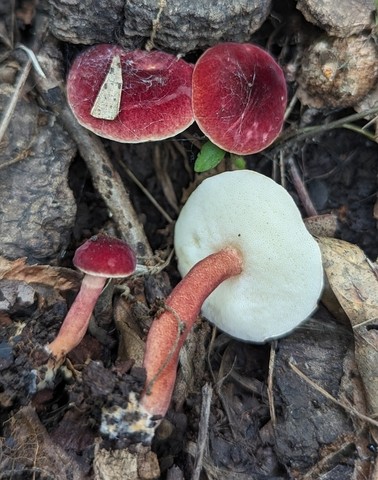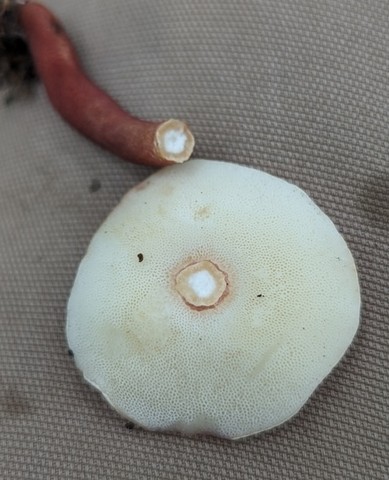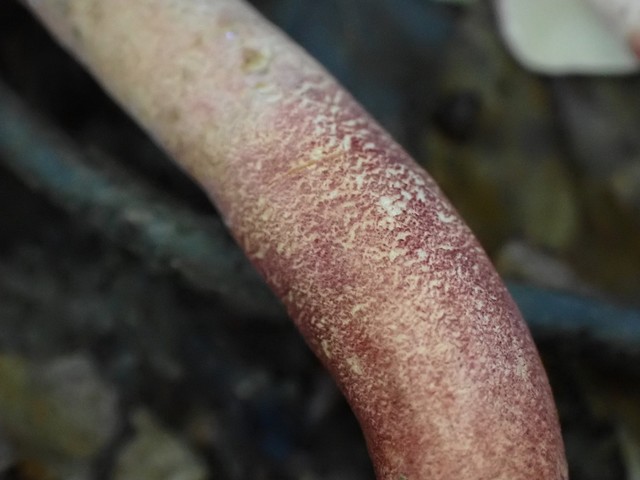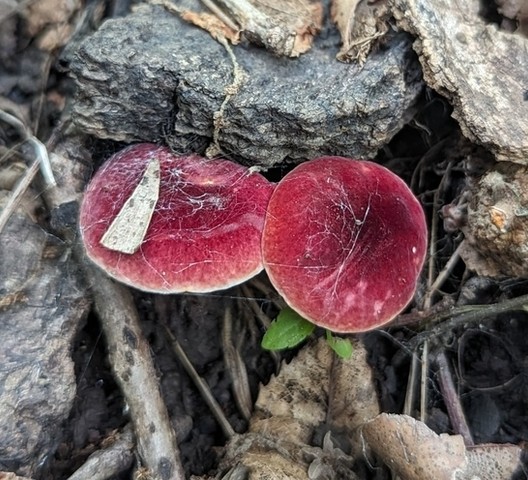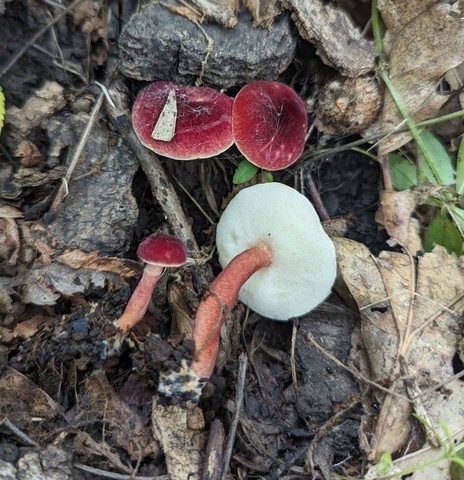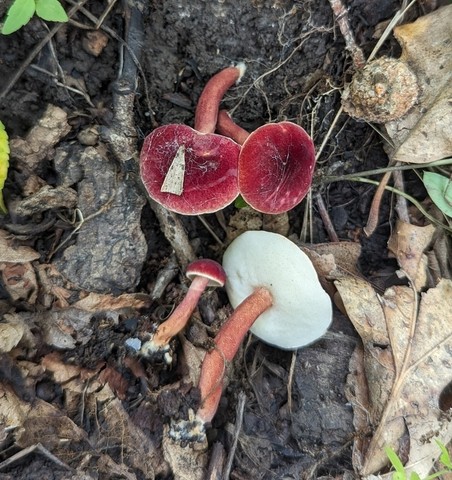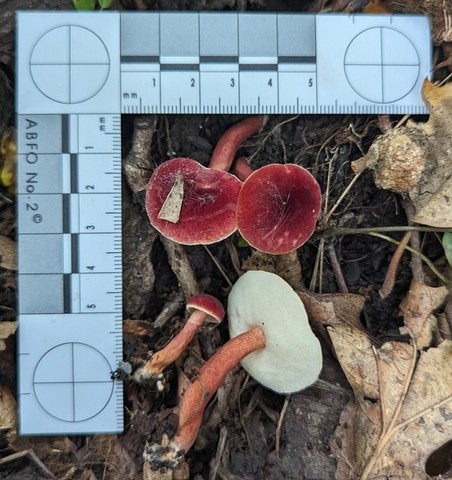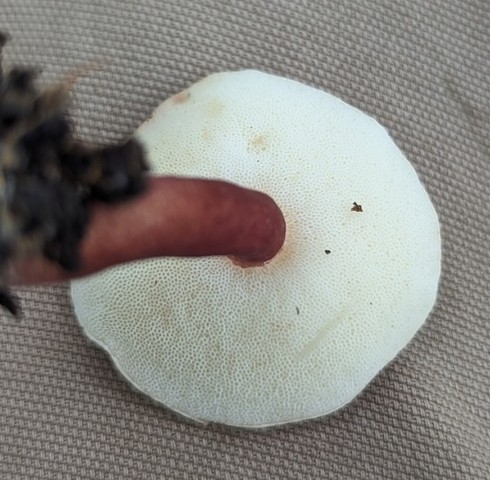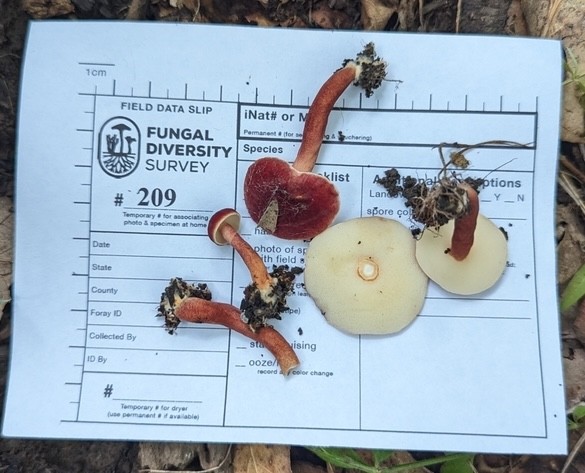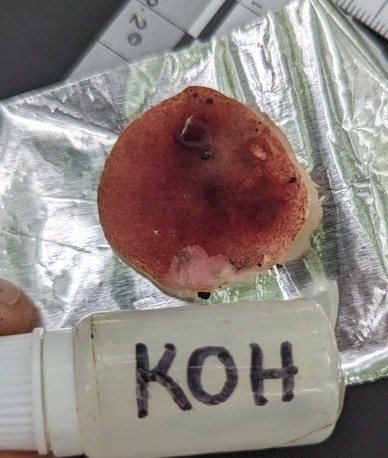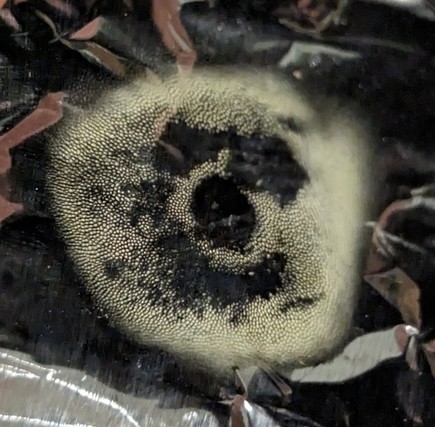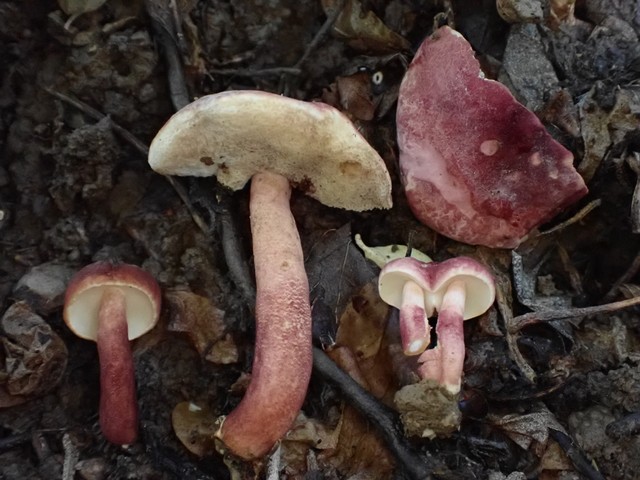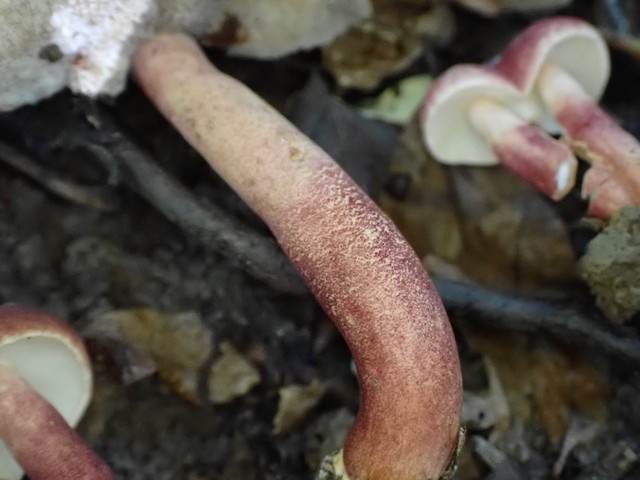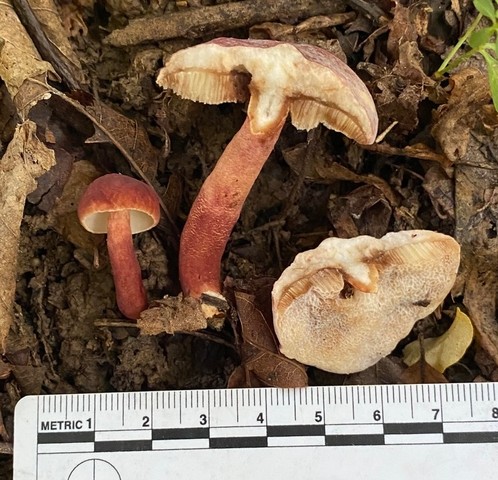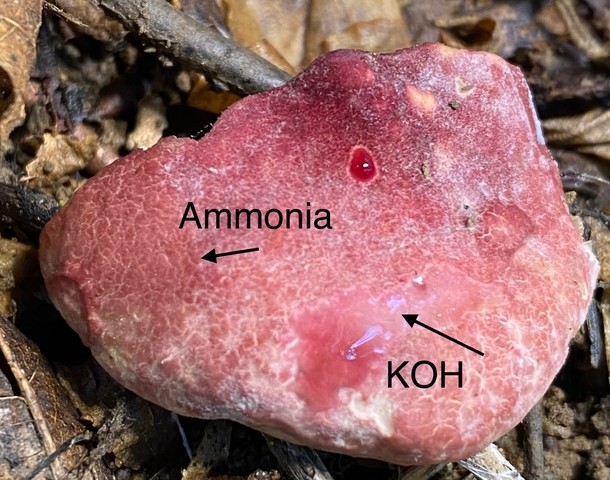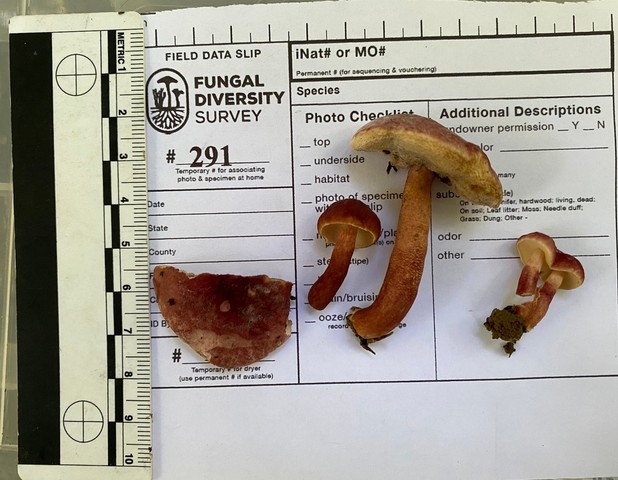Red Gyroporus
Gyroporus purpurinus
Life > Fungi > Basidiomycota > Agaricomycotina > Agaricomycetes > Agaricomycetidae > Boletales > Gyroporaceae > Gyroporus
Description
Gyroporus purpurinus is a mycorrhizal bolete that appears in summer and fall in woodland settings, often growing singularly, scattered, or gregariously amidst broadleaf trees. It occurs on ridges and in shaded draws in oak–hickory forests, sometimes in shrubby undergrowth. Associated trees include Chinkapin Oak (Quercus muehlenbergii), Black Oak (Quercus velutina), Bur Oak (Quercus macrocarpa), Northern Red Oak (Quercus rubra), American Hophornbeam (Ostrya virginiana), and occasionally Black Walnut (Juglans nigra). The species name purpurinus refers to the purplish-red coloration of the cap.
The cap is deep red to wine-colored, sometimes with violet tones, fading toward a pale margin. Its surface is finely fuzzy when young and may develop cracks with age. The stem is hollow with a white central pith and white basal mycelium, showing red tones that split to reveal yellow beneath. The pore surface is white to cream, becoming yellow with age; pores are round and do not bruise distinctly, or if so, slightly brown. The flesh is white, sometimes browning faintly in age. Odor is mild; taste may be slightly bitter. The spore print is yellowish.
Observations
July 16th, 2023 Indian Cave State Park
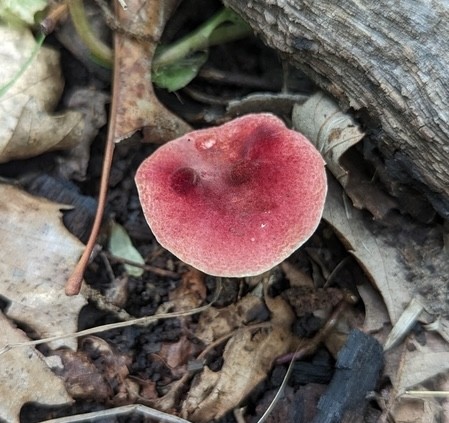
#209
- Growing gregariously on open mixed oak/hickory woodland ridge.
- Nearby Trees: Chinkapin Oak, Black Oak, American Hophornbeam, Bur Oak, Northern Red Oak, and distant Black Walnut.
- Cap, when young, subtomentose, red wine color in the center, fading to lighter shades of red towards the margin. Margin light colored.
- Stipe hollow with central pith, red developing lateral cracks, creating lighter shades of red. Basal mycelium white.
- Hymenium consisting of white round pores, not bruising where damaged.
- Smell: Not distinctive.
- Taste: Not distinctive.
- KOH: Fading cap color (slowly).
GTCGTAACAAGGTTTCCGTAGGTGAACCTGCGGAAGGATCATTAACGAGTCCGACTCGATGACCGCGAGGGGGGGGTCCTCCCCTCTCGTGCGTCTCGCGCGTCTCCTTTCCTGTGCACCCATCGTAGGTCCTTCGGATCTACGTCGACCTCTCGATCGTTCATGGACCGCGTGCGTGACGTGCGTCCGACGCACCGATGGAACAACTTTCAGCGACGGATCTCTTGGCTCTCGCATCGATGAAGGACGCAGCGAATCGCGATAAGTAATGTGAATTGCAGATCTTCCGTGAATCATCGAATCTTTGAACGCACCTTGCGCTCCTCGGCATTCCGAGGAGCATGCCTGTCTGAGCGTCGCGATATCCTCGAACCCGATGGGTCCCTCTCGCGAGGGATCACGGGCGCGGAGCTTGGGGGTTGCGGGCACGTCCTCACGGGGGACGGTCGGCTCTCCTGAAACGCATCAGCGGAGGAGGATGGCATCGCGATCGAGCGTGACCTTTTCCCCTCGACGTCGTAAGGATCGTCGTGGGACACGGGATCGCGAGCGATGGCGTCCGCCTCGGGCTTTCTTCCGGTCACGACCGGCATCTCAGGTTTCGGCCTCAGATCAGGCAGGGCTACCCGCTGAACTTView MycoMap DNA Results
August 9th, 2023 Indian Cave State Park
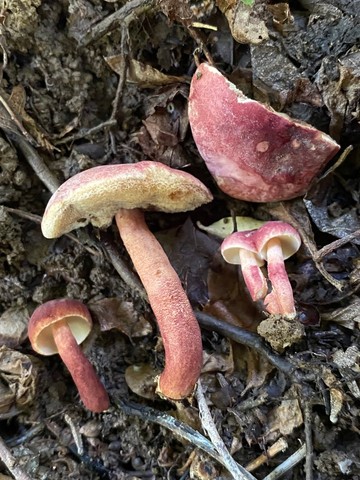
291
Growing gregariously in crowded, shrubby foliage (mostly Honeysuckle) at the top of a wet, shaded mixed oak/hickory woodland draw.
Large specimen shows signs of Hypomyces
- Cap: deep red with notes of violet; subtomentose; pileipellis smooth texture to cracking.
- Flesh: white; eventually brushing faint brown; flesh:hymium=1:1.5
- Stem: notes of yellow through cracked wine red texture; hollow.
- Taste: faintly bitter
- Hymenium: white with notes of violet on old specimen (Hypomyces?) bruising cream yellow.
- KOH: pileipellis: darkens surface, later turns pink; flesh: indistinct.
- Ammonia: pileipellis: darkens surface, later disappears; flesh: indistinct.
References
Kuo, M. (2020, October). Gyroporus purpurinus. Retrieved from the MushroomExpert.Com Web site: http://www.mushroomexpert.com/gyroporus_purpurinus.html
Singer, R. 1945. The Boletineae of Florida with notes on extralimital species. II. The Boletaceae (Gyroporoideae). Farlowia. 2(2):223-303 https://www.mykoweb.com/systematics/literature/Boletineae%20of%20Florida%20III%20Boletoideae.pdf
Created October 14, 2025 at 3:03 PM
